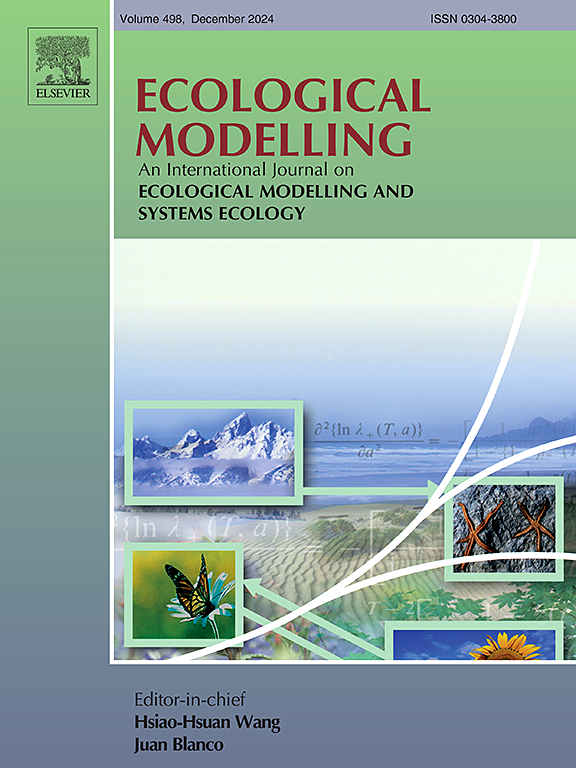Inferring the relative importance of navigation and landscape effects for migratory populations using agent-based models
IF 2.6
3区 环境科学与生态学
Q2 ECOLOGY
引用次数: 0
Abstract
Seasonal migration is a vital behavior for numerous animal species, offering ecological services such as seed dispersal, pollination, and resource influxes. However, accurately describing and predicting the spatial dynamics of migrating populations remains a challenge due to the scale of the behavior and the different navigation strategies employed by the animals to complete it. The goal of this study is two-fold: (1) to develop an agent-based model (ABM) to simulate the final spatial distributions of migratory animals using two navigation strategies—true navigation and vector navigation—and (2) to use a case study of migratory monarch butterflies to determine the value of comparing model-generated spatial patterns with empirical observations. True navigators are hypothesized to use a combination of location and directional information to reach specific destinations, while vector navigators follow consistent directions throughout their journey, without altering these directions with respect to their current location. Therefore, it is logical to assume that true navigators would be more accurate in reaching specific destinations than vector navigators. Our model was designed to test this assumption by investigating the spatial distribution of migrants traveling across landscapes characterized by water bodies and elevational gradients. While true navigators were indeed more likely to reach their destinations than vector navigators on homogeneous landscapes, our model revealed that heterogeneous landscapes can successfully channel vector navigators to their destinations. Applying the model to monarch butterflies, we found that simulated distributions based on vector navigation closely matched observed overwintering locations. This not only demonstrates the utility of our model in generating spatial patterns that can be compared to empirical data, but also reveals that vector navigation across a heterogeneous landscape is a plausible strategy that would allow western monarch butterflies to reach their overwintering sites. The analysis also highlighted limitations in the observed data, such as biases introduced by preferential sampling, emphasizing the need for improved data collection methodologies. This study demonstrates the utility of ABMs in linking hypothesized navigation processes to observed migratory patterns, offering a framework for investigating and distinguishing navigation strategies in varying migratory species.
求助全文
约1分钟内获得全文
求助全文
来源期刊

Ecological Modelling
环境科学-生态学
CiteScore
5.60
自引率
6.50%
发文量
259
审稿时长
69 days
期刊介绍:
The journal is concerned with the use of mathematical models and systems analysis for the description of ecological processes and for the sustainable management of resources. Human activity and well-being are dependent on and integrated with the functioning of ecosystems and the services they provide. We aim to understand these basic ecosystem functions using mathematical and conceptual modelling, systems analysis, thermodynamics, computer simulations, and ecological theory. This leads to a preference for process-based models embedded in theory with explicit causative agents as opposed to strictly statistical or correlative descriptions. These modelling methods can be applied to a wide spectrum of issues ranging from basic ecology to human ecology to socio-ecological systems. The journal welcomes research articles, short communications, review articles, letters to the editor, book reviews, and other communications. The journal also supports the activities of the [International Society of Ecological Modelling (ISEM)](http://www.isemna.org/).
 求助内容:
求助内容: 应助结果提醒方式:
应助结果提醒方式:


